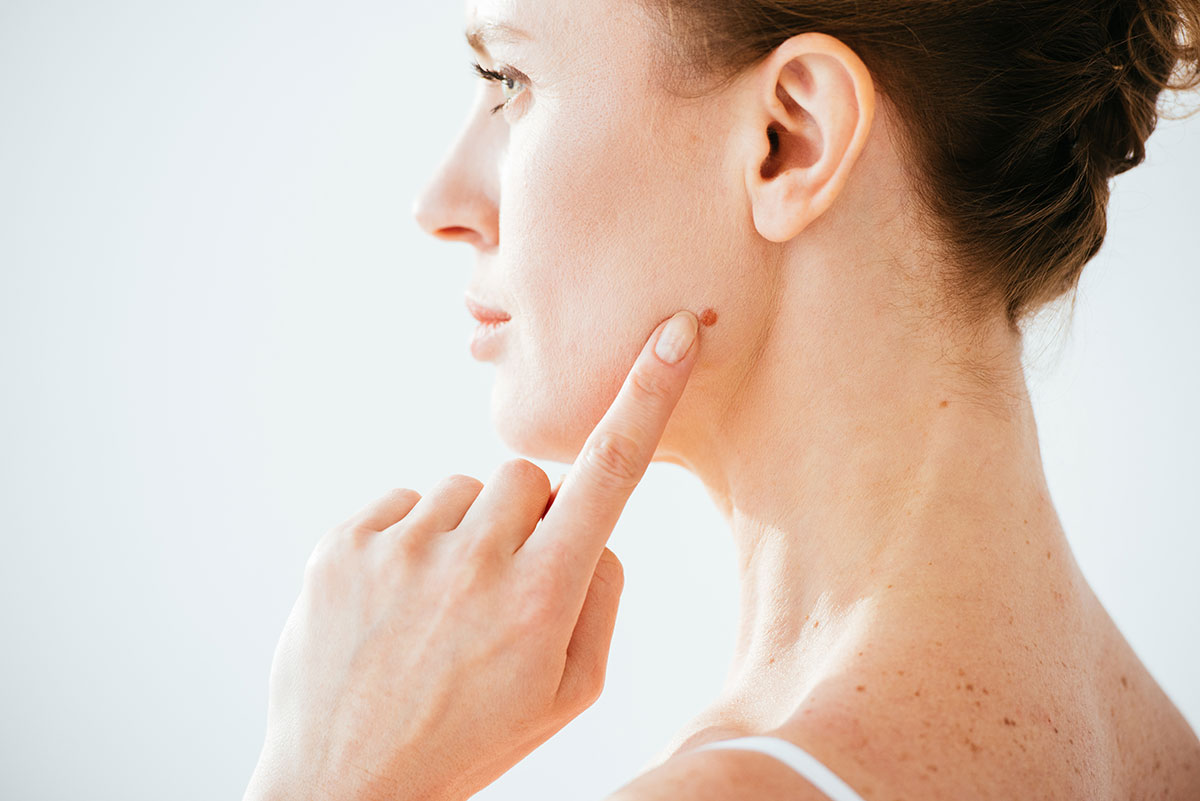
What Is Mole Removal and How Is It Done?
According to Cleveland Clinic, the average person has 10-40 moles on their body. Some moles are larger than usual and, though they may not be a health concern, may make you self-conscious.
Moles can appear for various reasons, and one of the most common causes is exposure to UV radiation. While many moles are benign and harmless, they can cause cosmetic concerns and even physical discomfort, making their removal essential. A mole that changes in size and shape can also cause suspicion, prompting its removal (and sometimes biopsy) as soon as possible.
If you are troubled by moles on your face or body, there are two methods by which they can be entirely removed—surgical excision and shave excision. Both procedures require a delicate, meticulous approach to avoid visible scarring—a mastery of skill that Dr. Ostad artfully demonstrates with his customized procedures.
To understand mole removal, you first need to understand what moles are. A mole is a collection of melanocytes. Moles are often darker than the rest of your skin and may be benign but can also be abnormal.
Mole removal in New York is a customized treatment to remove the mole structure, whether on the face or body. It is performed with advanced techniques, leaving your skin smooth and healthy following treatment. Dr. Ostad uses meticulous techniques to resolve unsightly moles quickly and efficiently, leaving your skin fresh and unblemished.
Mole removal can take different shapes, depending on its location and size. There are two options to treat moles. If the lesion is deeper, an excision is required, which means you will be left with a couple of stitches for a week. The other option is to perform a shave removal, in which the mole is removed by shaving it off. Below is a description of how both procedures work:
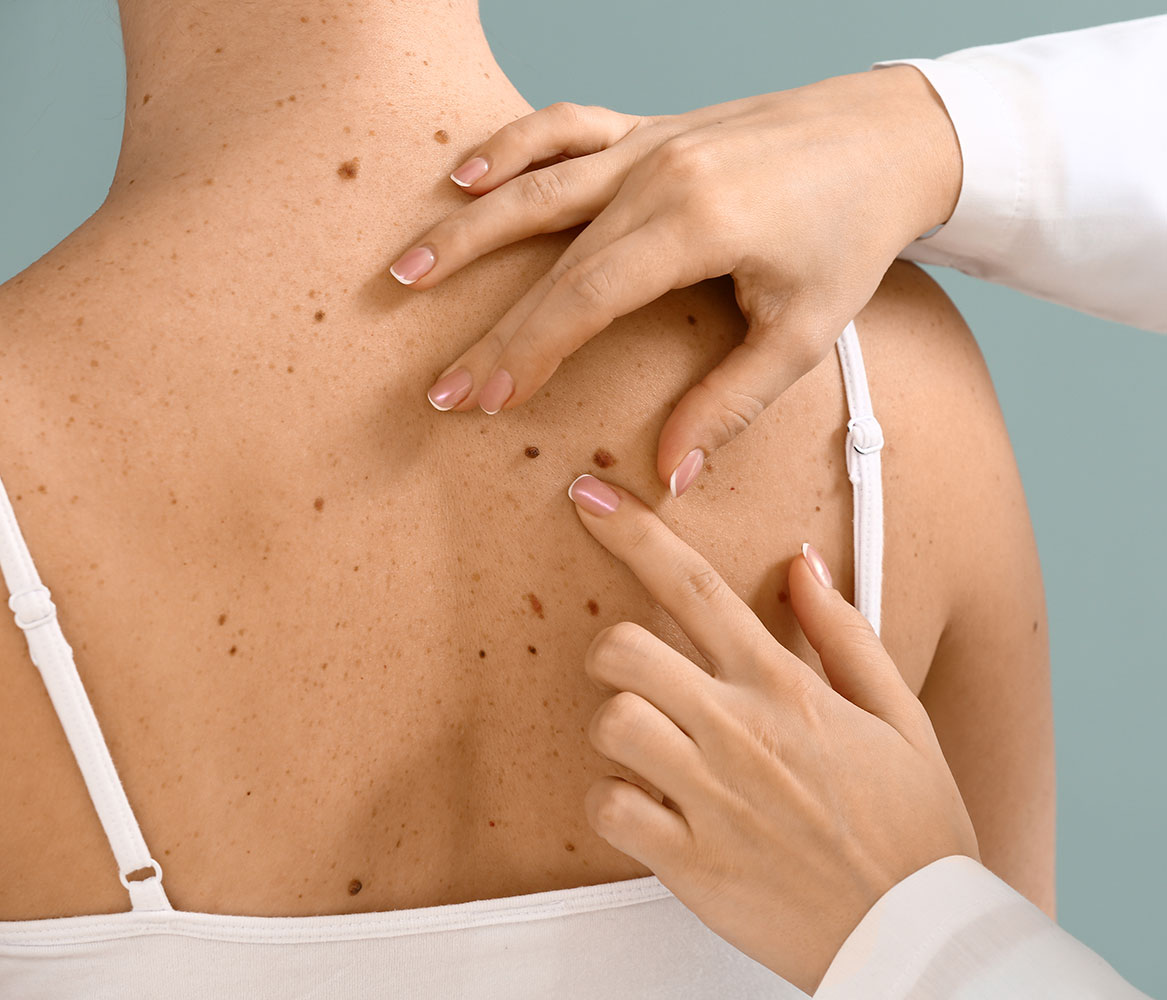
Moles can appear on any part of the body, so mole removal can also be performed on various areas. With that said, moles also appear in areas that are mostly frequently exposed to UV rays, making the following regions the most common ones:
Moles can form differently for each person, so no two individuals will experience the same results with a certain treatment. A thorough consultation with Dr. Ostad can help determine the right approach for your case. Our treatment plans are curated for individual patients, offering the best results with the least invasive measures possible.
The treatment process may depend on the method used to remove the mole. That said, several standard steps are taken to ensure an effective treatment and smooth recovery. Here is what you can expect during the mole removal procedure:
Consultation: Before the mole removal procedure begins, Dr. Ostad will inspect your skin and note any modifications. He may use a specialized zooming tool to look at the mole and determine the best way to remove it. You may be asked to come into the office or take pictures several weeks before removing the mole.
Area Prepping: During the next stage of the mole removal process, Dr. Ostad will mark the skin area that needs to be removed. He will clean it for surgery afterward, administering a numbing agent to reduce discomfort. This can be in the form of an injection, a topical treatment, or both.
Removing the Mole: Dr. Ostad will use a special tool to excise the mole, cutting it around the edges until no tissue is left. Depending on the mole’s size, he may either shave it or surgically remove it. Should bleeding occur, he will cauterize the wound to keep the post-op swelling at a minimum.
Closing and Dressing: After removing the mole, Dr. Ostad may use sutures to close a wound if it is particularly deep. He will also apply aquaphor to keep the wound moist. You will be given aftercare instructions to make sure it heals properly.
Mole removal is a low-risk procedure, especially when done by a certified professional such as Dr. Ostad. However, to ensure smooth recovery, it’s recommended that you keep the area clean and dry, using only topical treatment to provide moisture. The treated site may take around two to three weeks to heal fully, but you should be able to return to your daily routine right after the procedure.
Most moles are harmless, but there is also a chance that one can turn cancerous in the long run. Mole removal reduces the risk of cancer, eliminating potential worries, but also offers more insight into the mole. Dr. Ariel Ostad has an on-site lab at his practice that is used for diagnostics so he can determine whether or not the mole is cancerous.
Moles can cause discomfort, depending on their location and their size. If the mole rubs against your clothing, it can become irritated and even start causing you pain. This is especially the case if the mole is in areas like the band of your bra or the underarm area. Sweating can further irritate the mole, so getting the mole removed can improve your daily comfort.
While some people may enjoy having a mole as a “beauty mark,” sometimes it’s just a distraction. A mole of a larger size or an odd color can stick out unappealingly, taking away the attention from your style or your outfit. Having the mole removed can make your appearance seem well put together, restoring the smoothness of your skin.
Moles can sometimes be difficult to groom or take care of, as they can easily be scratched, knocked, or even cut during shaving. This can cause them to bleed or ooze fluid, which would later lead to different hygiene issues. Hairs also tend to grow out of the mole, and their location potentially makes grooming or plucking quite challenging. By removing the mole, you can have an easier time taking care of the area.
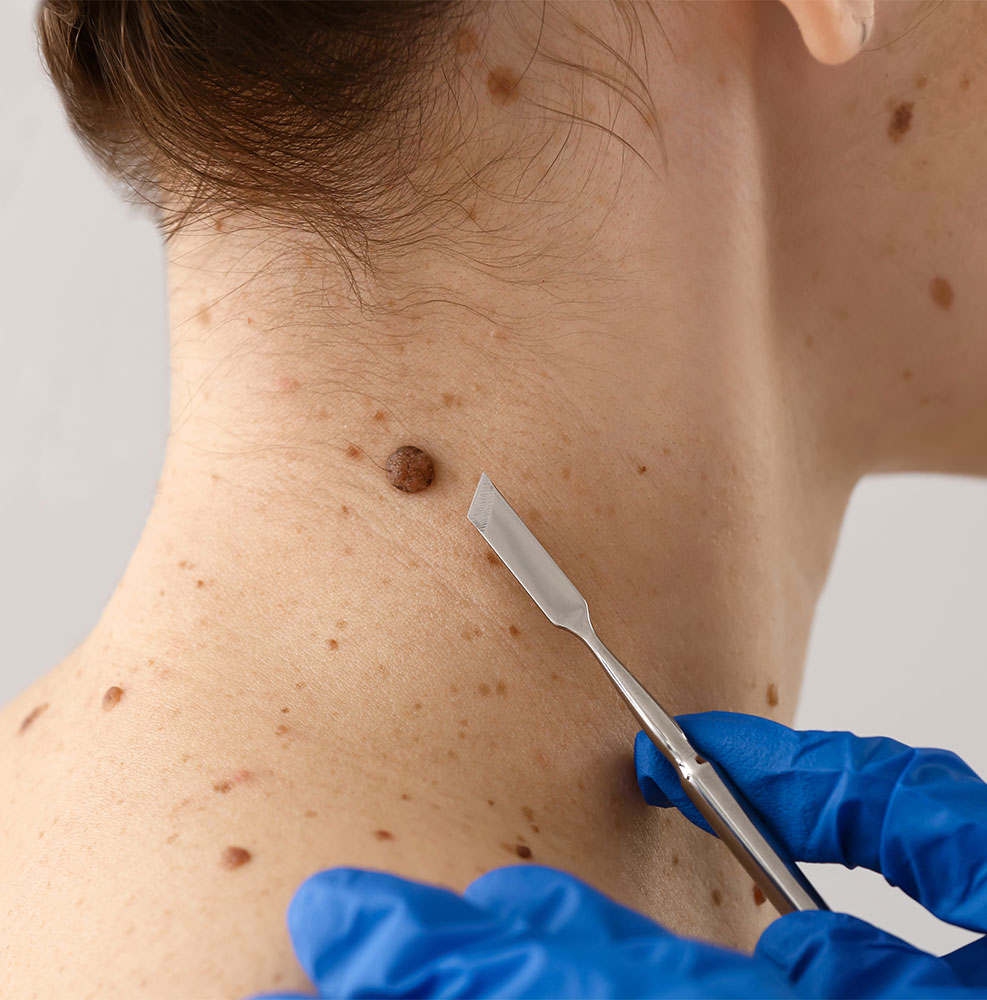
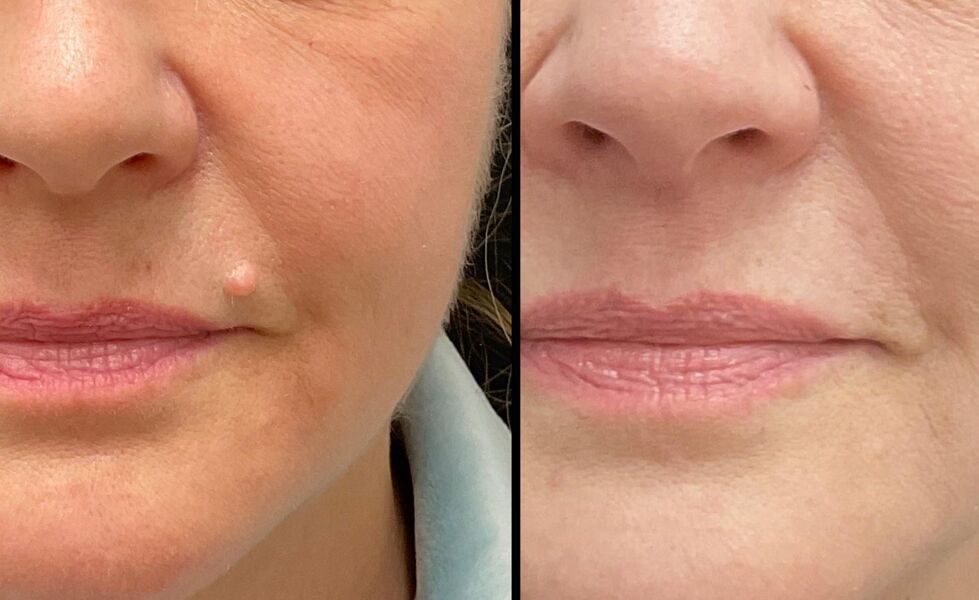
There are two methods by which they can be entirely removed- surgical excision or shave excision. If the lesion is deeper, an excision is required. This patient had a surgical… Read More
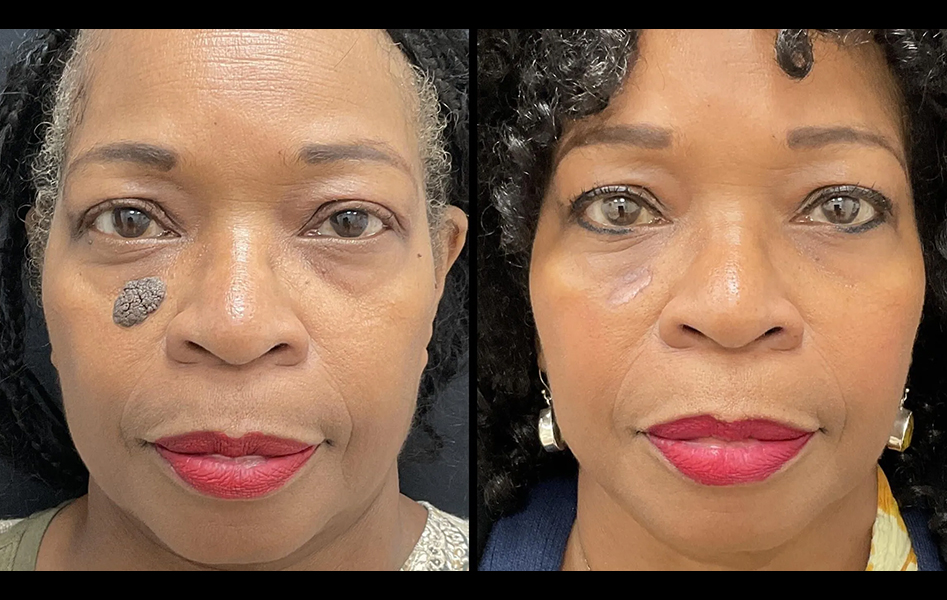
This patient has a family history of moles, benign skin growths called seborrheic keratosis and lots of DPN’s (Dermatosis Papulosa Nigra) which are small growths that present… Read More
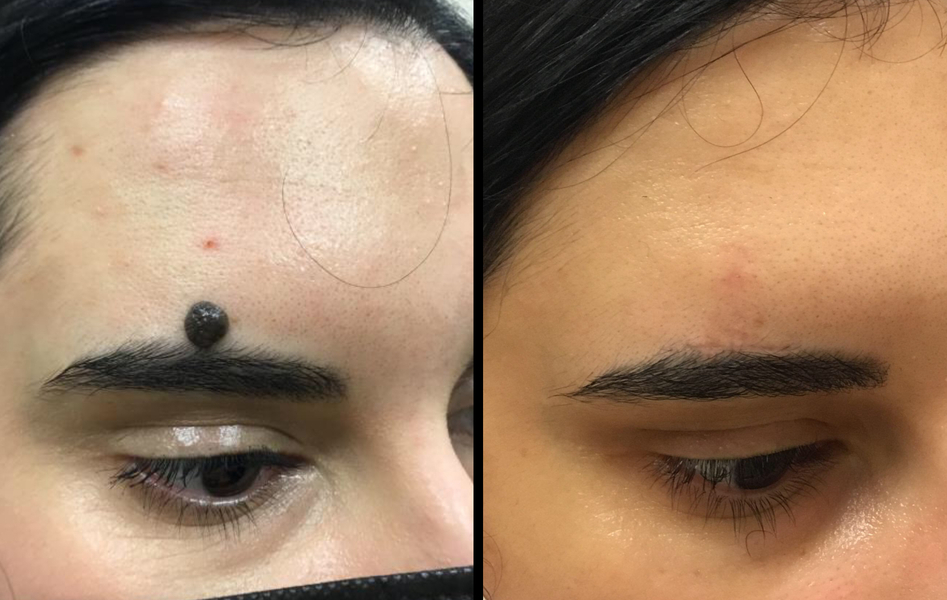
For this patient, an excision was the best option. During this procedure, I cut out the entire mole- including the area underneath- to the fat layer beneath the skin. The incision… Read More
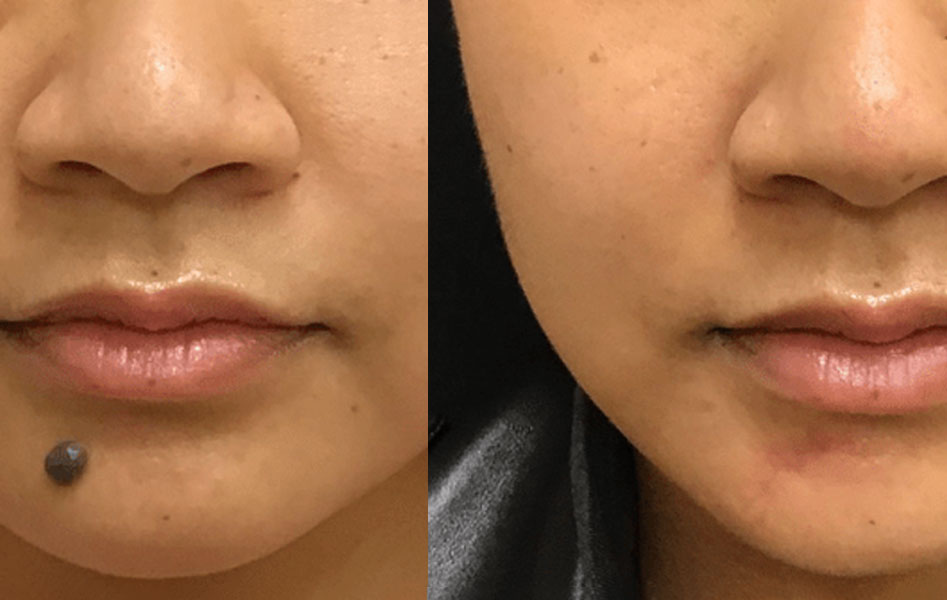
This patient had Mohs surgery, which left her with a scar. We treated her with four sessions of Fraxel Restore, and the results are amazing… Read More
Mole removal is often used for cosmetic purposes. However, mole removal can also be used beyond cosmetic measures, like the prevention of melanoma. By removing a suspicious mole in its early stages, the mole can be biopsied in Dr. Ostad’s on-site lab to determine if it is cancerous and can potentially save your life.
A mole in a sensitive area, such as near the joints or places easily irritated by clothing, could also become painful. Removing the mole can restore function and comfort in the area, improving the overall quality of life for the patients. Moles that have been damaged or prone to infection or bleeding can also prevent long-term complications, improving one’s skin health.
“Recently when I rediscovered Dr. Osted I felt like I had found nirvana. After many skin cancers and surgeries, I was delighted to find my #1 doctor, the head of the skin cancer foundation. Now I know I’ll be well taken care of. In addition he is a master cosmetic doctor who has no equal. He is like Michaelangelo, a sculptor and an artist.” Anne N
“Dr. Ostad provided excellent care and addressed all my concerns. Many years ago, he performed Mohs surgery on my shoulder, and the stitches are barely recognizable. He has magical hands! His staff is AHHHH-MAZING as well. He deserves 5,000 stars!” anonymous
“Dr. Ostad was very gentle and caring, carrying out my procedure which alleviated some of my health concerns. He honestly described the procedure and what to expect after it and how to take care of it. His competent staff provide professional support. Highly recommended.” anonymous
Moles can be removed for aesthetic or health reasons. You may be a candidate for mole removal if you have a mole with indications of cancer characteristics such as size, shape, or color changes. You may also be a candidate if you want a mole removed to enhance your appearance.
There is typically no downtime after mole removal. In most cases, you can resume normal activities immediately after treatment. Healing times can vary, depending on the patient. Generally, mole removal requires at least two to three weeks for healing. Initial wound care is essential to prevent infection and minimize scarring.
After having your mole removed, you will likely experience a series of temporary side effects, such as redness, swelling, and mild pain. Scabbing and crusting are also common and usually fall off within a week or two. Make sure not to pick the scab, as this could lead to infection and scarring. Itching could also be a side effect, so refrain from scratching it while it heals.
Keep the incision site clean and use a moisturizing ointment. Do not stretch the scar. Avoid sun exposure to the wound. Massage the scar area after your sutures and scabbing are gone. Ask Dr. Ostad to recommend scar-minimizing treatments.
For the most part, mole removal treatments are permanent, and the chances of them growing back are slim. However, if active cells are left behind after the removal, they may grow back. Pre-cancerous cells have a higher chance of recurrence, so you should check your moles regularly. Should a mole return after it was removed, you may want to monitor the changes and come in for a biopsy.
The mole removal procedure usually takes around 15 to 30 minutes to finish, however, it depends on the mole’s complexity. Surgical routes often take longer to finalize than laser-assisted procedures.
Dr. Ostad is a triple-board certified dermatologist and cosmetic surgeon renowned for his experience in rejuvenation procedures. With more than 20 years of experience in dermatological surgery, especially mole removal, he helped numerous people obtain beautiful results at his practice in New York. Dr. Ostad is recognized for his precision, removing moles while reducing the chances of scarring. Having focused on advanced patient care, Dr. Ostad provides customized treatment plans that offer results for every patient, regardless of the mole size.
Mole removal is available at Dr. Ostad’s office in NYC, where he offers tailored treatment plans and top-quality services.
Should you have any more questions not addressed in this FAQ, please contact our office on the Upper East Side of Manhattan. Together with our dedicated team of specialists, we can offer all the information you need to make the correct decision for yourself.
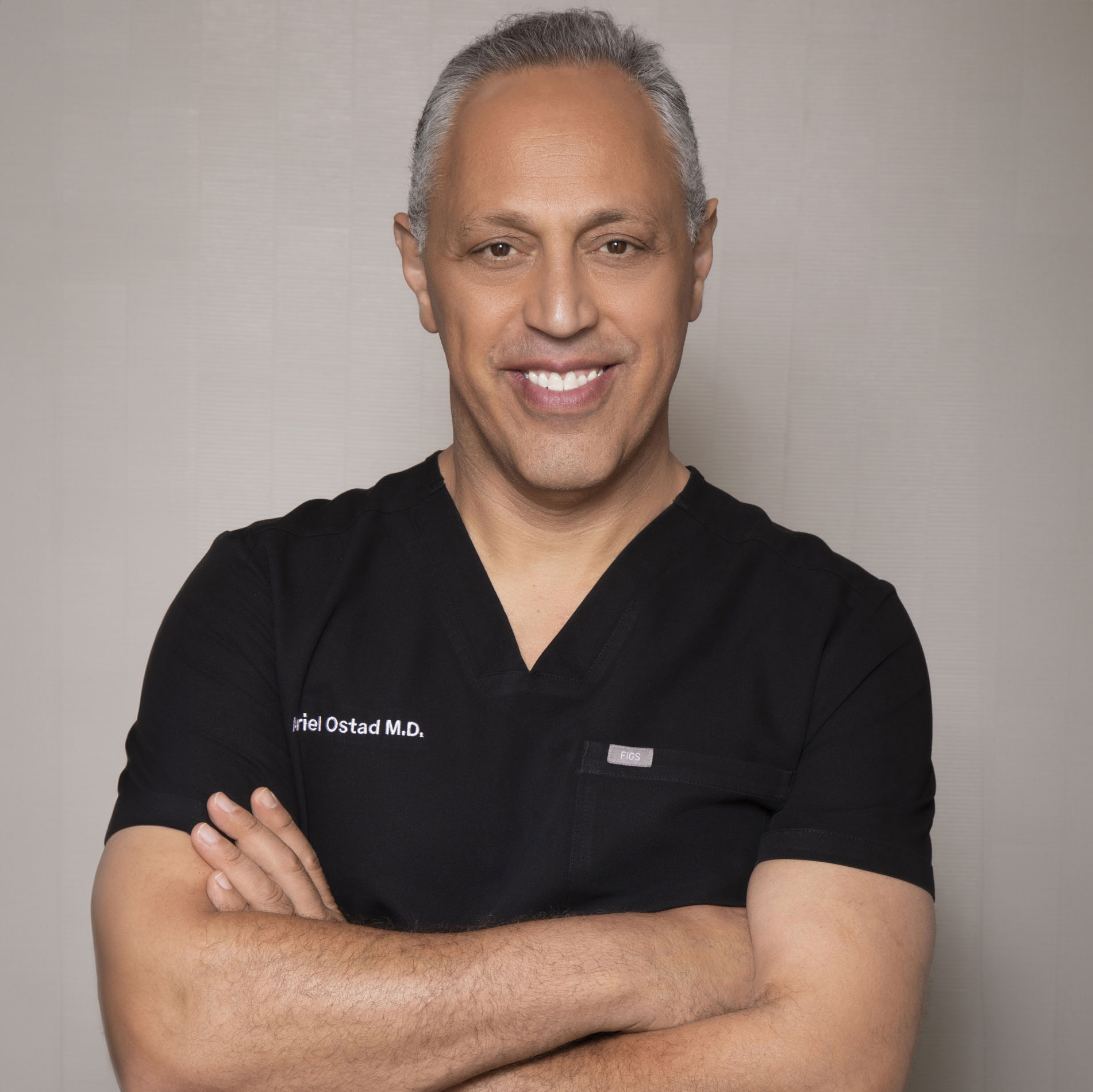
In some cases, yes. If your mole appears suspicious or has changed in shape, color, or size, we may send it to a lab for biopsy to rule out skin cancer. If the mole is being removed for purely cosmetic reasons and appears benign, a biopsy may not be necessary.
Yes, moles can be removed for cosmetic reasons if they are bothersome or affect your appearance. We can discuss the best approach to ensure the mole is removed safely and with minimal scarring.
There are several techniques for mole removal, including surgical excision or shaving. The method used depends on the size, depth, and location of the mole. For deeper moles, surgical excision may be necessary, where the mole and surrounding tissue are carefully cut out. For smaller, raised moles, shaving may be sufficient.
Combining mole removal with other complementary treatments can enhance medical and aesthetic outcomes. To reduce the risks of bleeding and side effects, Dr. Ostad may use laser therapy to destroy the pigment in the mole and cauterize potential bleeders. Microneedling and chemical peels can also be used to improve the skin’s texture, reducing potential pigmentation and keeping the scarring at a minimum. Medical-grade skincare can also be used to speed up skin healing, reducing long-term imperfections and refreshing post-procedure skin.
At Dr. Ostad’s office, we believe that a comprehensive rejuvenation approach is more satisfactory for the client than mere mole removal. For this reason, we will evaluate the entire target area and we can address any potential skin concerns you may have. For instance, if you are experiencing discoloration on the whole area surrounding the mole, we can use laser procedures and other advanced treatments to lighten the skin. The combination of the right methods can significantly improve your skin quality.
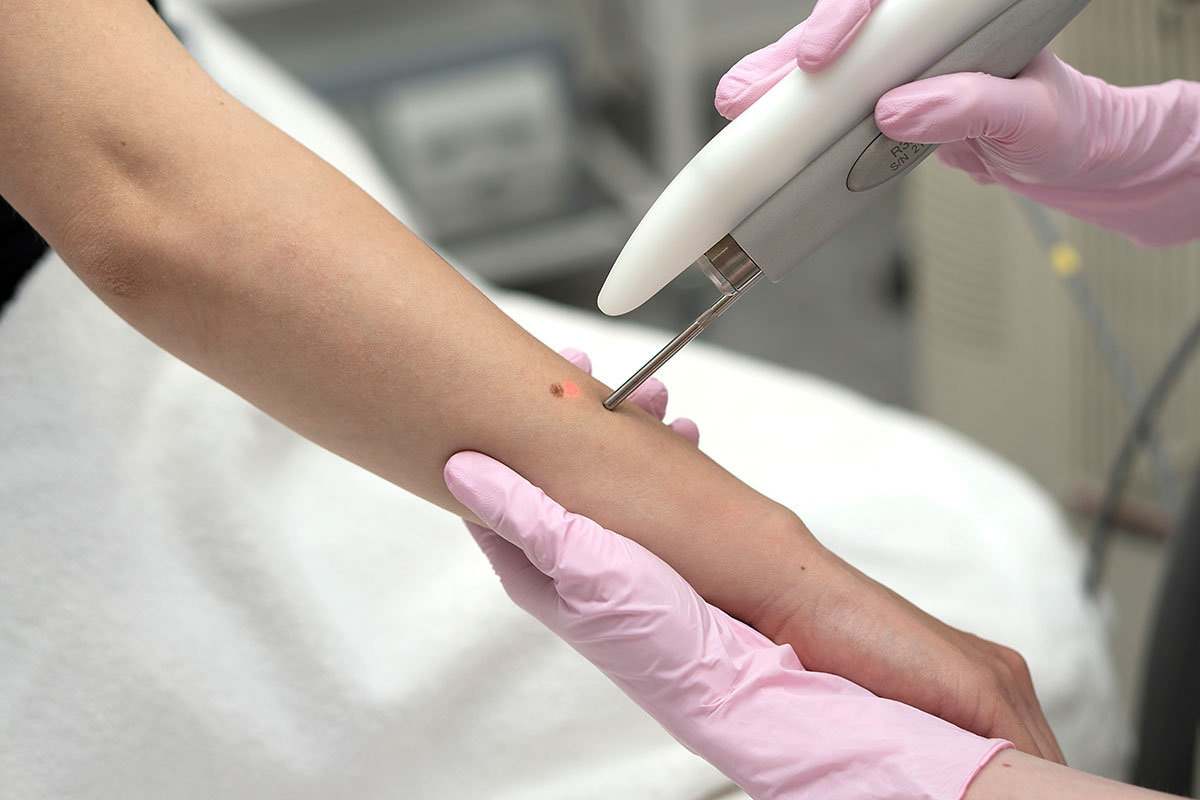
Advanced techniques have significantly improved how we approach mole removal, enhancing precision and reducing the recovery time. At Dr. Ostad’s practice, we use advanced technology such as laser and radiofrequency to treat non-cancerous moles, thus minimizing the risk of scarring.
Dr. Ostad also uses the precise surgical excision method for large or suspicious moles. The high-end equipment allows him to test the mole for potentially cancerous cells, reducing cancer risk from its incipient stages.
At Dr. Ostad’s practice, mole removal is used alongside innovative technologies. This can include digital dermoscopy, which is frequently employed for mole mapping and improving the outcome. Scar revision procedures are also utilized alongside the mole removal treatment, improving aesthetic results while reducing the time spent in recovery.
Dr. Ariel Ostad is one of the few dermatologists in New York with triple-board certification. This includes Facial Cosmetic Surgery, Dermatology, and Mohs Micrographic Skin Cancer Surgery. His experience and constant involvement in seminars have led to him receiving multiple honors, including as “Top Doctor” by Castle Connoly, for over a decade. Over his years as an NYU Surgical Attending of the Year, Dr. Ostad has perfected his mole removal technique and passed the skills down to other surgical residents.
As well as a highly skilled dermatologist, Dr. Ostad is also an extremely compassionate, caring doctor who values trust and performs mole removal procedures with your comfort and results as his primary concern. For this reason, he offers personalized treatments that address each mole, reducing the chances of scarring in the long run.
Dr. Ariel Ostad’s offer is designed to be practical and comforting for his patients. For this reason, he maintains strict cleanliness, sanitation, and safety standards while designing his office to be inviting. The office also received full certification from the AAAASF (American Association for Accreditation of Ambulatory Surgery Facilities) to operate as a surgical facility.
Over the years, Dr. Ostad has invested in various laser and surgical devices that can address numerous conditions, including moles. Each piece of equipment is regularly updated as the technology improves. The practice on the Upper East Side of Manhattan features an on-site lab for diagnostics and Mohs micrographic surgery, allowing him to check suspicious moles.

According to Cleveland Clinic, the average person has 10-40 moles on their body. Some moles are larger than usual and, though they may not be a health concern, may make you self-conscious.
Dr. Ariel Ostad has seen patients for this service, including BOTOX in NYC, from all over the tri-state area, including Manhattan, Midtown, the Upper East Side, the Upper West Side, Brooklyn, New York City, the Bronx, Harlem, Astoria, Queens, Long Island, New Jersey, Connecticut, and more. If you are interested in any of the services offered at the Office of Dr. Ariel Ostad, please contact us for more information.
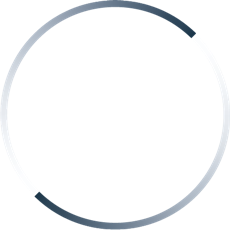
These skincare products combined with your treatment plan customized by Dr. Ostad will help enhance your results and improve your overall skin texture. Click on a product below to learn more.
Dr. Ariel Ostad has seen patients for this service from all over the tri-state area, including Manhattan, Midtown, the Upper East Side, the Upper West Side, Brooklyn, New York City, the Bronx, Harlem, Astoria, Queens, Long Island, New Jersey, Connecticut, and more. If you are interested in any of the services offered at the Office of Dr. Ariel Ostad, please contact us for more information.
By submitting this form you agree to be contacted via phone/text/email.